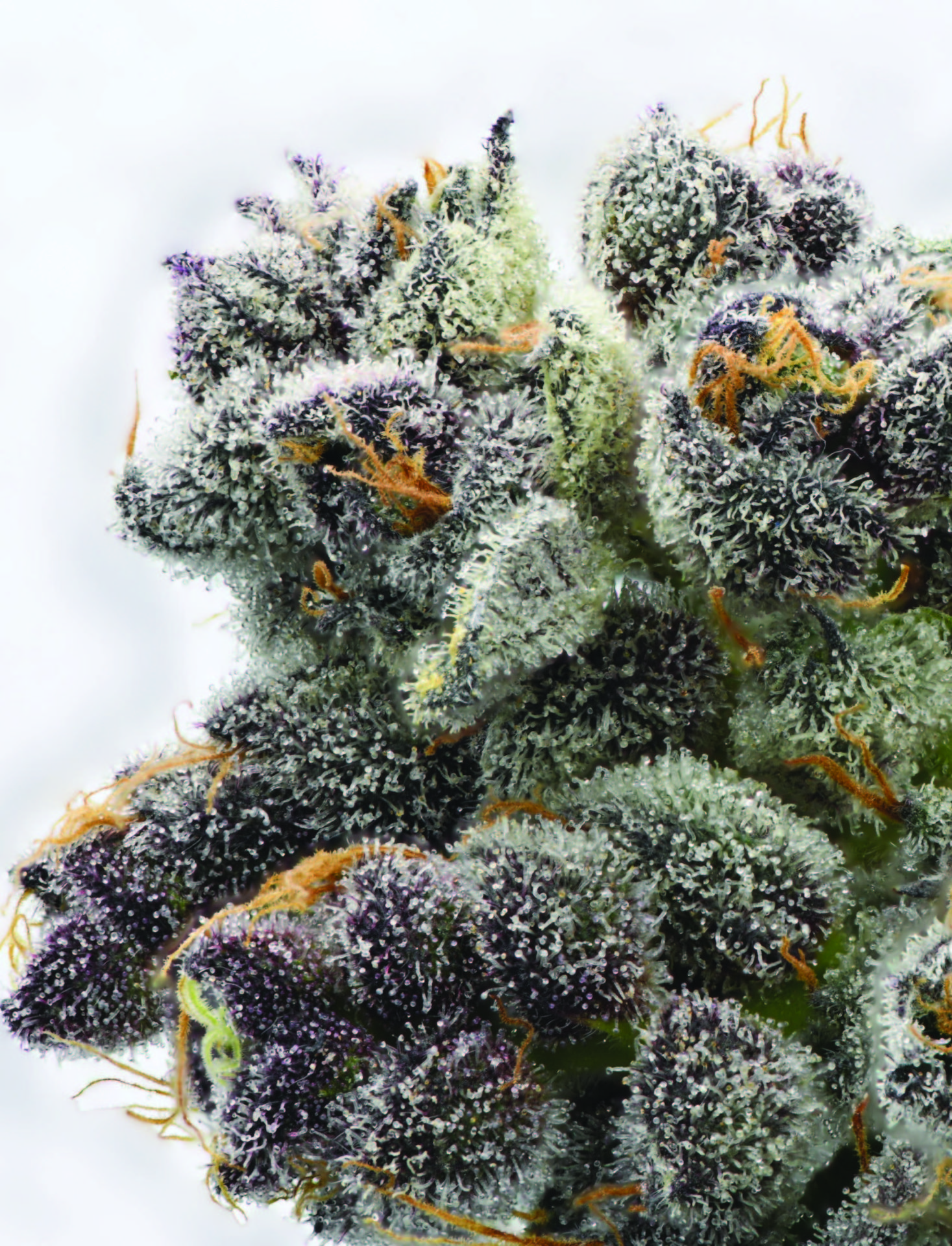By Chad Lozano
AIDS / HIV
Human Immunodeficiency Virus, or HIV, is the virus that causes Acquired
Immune Deficiency Syndrome (AIDS). The virus weakens a person’s immune
system so they are not able to fight infections or cancers as effectively.
Having HIV does not always mean you have AIDS, as it can take many
years for people with HIV to develop AIDS. Along with the diagnosis are
many secondary infections from pneumonia, to Kaposi Sarcoma, to open
sores that will not heal. Cannabis oil applied directly on the wound sees the
pink hue of new cells growing to the anesthetically properties of Cannabis
oil.
Cannabis was the first organic medicine
to be recommended for HIV/AIDS, and is
used to treat secondary infections and to
deal with the side-effects of the vast array
of pharmaceutical-based”Toxic Cocktails”
given to patients. Cannabis was the first
medicine to stop Chronic Wasting Disease
(CWD) as cannabinoids cause patients to
develop a healthy desire to eat, put on
and maintain weight. Giving an HIV/AIDS
patient cannabinoid containing foods,
results in a smile that translates to up to 10
hours of relief depending on the patient.
No pharmaceuticals have been found to
give patients similar results, none.
CANCER
The National Institutes of Health (NIH) estimates
that the medical expenditures for
cancer could reach as high as $207 billion
in 2013, said researchers from the National
Cancer Institute (NCI) — $226.8 billion for
direct medical costs (total of all health
expenditures) and $123 billion for indirect
mortality costs (cost of lost productivity
due to premature death). Cancer costs
are projected to reach at least $258 billion
in 2020.
Cannabis starves cancer cells of the energy
they need to replicate themselves.
The anti-tumor action of cannabinoids is
well known and clinical trials have shown
that cannabinoids have the ability to “turn
off” the cancer gene that causes breast,
lung, prostate and other types of cancers
to metastasize. Cancer symptoms also
vary widely based on the type of cancer.
Current cancer treatment includes
chemotherapy, radiation, and surgery,
but cannabis is increasingly becoming a
valid treatment option for those who suffer
from this disease. Cannabis has proven to
be the one medicine that we can ingest,
smoke, or vaporize to combat cancer
within our bodies and to alleviate many
of the horrendous side effects of “modern”
cancer treatments.
CHRONIC PAIN and PEAK PAIN
Cannabis preparations have been used
as a remedy for thousands of years in
traditional medicine. Clinical use of cannabinoid
substances is restricted, due to
legal, political and ethical reasons. The
pain-reducing effects of cannabis have
been well documented, but are limited
by their psychoactive side effects. Endocannabinoids
within our bodies have an
analgesic effect and evidence shows that
“chronic states of pain” can alter the endocannabinoid
receptor system at the key
sites involved in pain processing. Within our
bodies we have a newly discovered endonomic
system which is run exclusively by
cannabinoids which regulates pain messages
in our bodies. Peak pain is the pain
level above and beyond the patient’s
regular pain threshold, leaving many sufferers
to develop a dependency on habitforming
pharmaceuticals such as vicodin,
percocet or morphine.
EPILEPSY and SEIZURES
2.3 million Americans live with epilepsy, a
neurological condition that includes recurring
seizures. More than 1 million of them
live with uncontrolled seizures. Some patients
may be helped by surgery or other
non-drug treatments, but for many, no
answers have been found. People with
uncontrolled seizures live with the continual
risk of serious to catastrophic injuries.
From extreme bruising from blunt trauma,
to broken bones & teeth, to bitten tongues
& lips, to extreme total body fatigue — as
all of the body’s muscles go into spasm.
Due to a lack of education cannabis is not
used widely enough to treat epilepsy or
the various ailments that can also cause
seizures, such as multiple sclerosis or diabetes.
The overwhelming evidence shows
when epileptics and other seizure sufferers
are treated with medical marijuana on a
daily basis, it can reduce their attacks from
hundreds a day to just a handful of times a
year. Usage again eliminates many of the
tragic side affects associated with current
pharmaceutical treatments.
GLAUCOMA
Glaucomas’ exact causes are still unknown,
yet it is one of the leading causes
of blindness in the world. Raised intraocular
pressure is a significant risk factor for developing
glaucoma. Damage to the optic
nerve from glaucoma can result in differing
degrees of vision loss to total blindness.
Cannabinoids also have a neuro-protective
action, which aids in the preservation
of neuronal function. Smoked or vaporized
cannabis from the very first inhale, effectively
and significantly lowers intraocular
pressure. However, cannabis’ effect on
eye pressure only lasts 3-4 hours, meaning
that to lower eye pressure around the
clock it would have to be smoked or vaporized
6-8 times a day.
In the US, more than 5 million suffer from
symptoms of Post-Traumatic Stress Disorder
annually, with 22 PTSD suffering war-vet
patients committing suicide every hour.
PTSD is a severe, debilitating anxiety disorder,
in which the individual’s psychological
defenses are overwhelmed. It has been
recognized in the past as; stress syndrome,
shell shock, battle fatigue, traumatic war
neurosis, and post-traumatic stress syndrome.
Sufferers often continue to reexperience
original traumas by means of
flashbacks or nightmares, as well as experiencing
increased arousal, which can
manifest in having difficulty falling or staying
asleep, anger, hyper-vigilance, nightsweats
and night-terrors.
Research suggests that cannabis helps
individuals find relief and cannabinoids offer
far better results than the current class
of drugs commonly used to treat the disorder.
Cannabis helps PTSD suffering patients
reduce their association between stimuli
and the traumatic situations in their past
by aiding in memory extinction. Smoking or
vaporizing therapeutic cannabis is a reliable
and effective means to treat anxiety
and the aversive memories formed in PTSD
sufferers, while eating cannabinoid-containing
foods offers far longer relief.
For more information please contact
me at: Michael PEARCE
mjmpearce@sympatico.ca

















